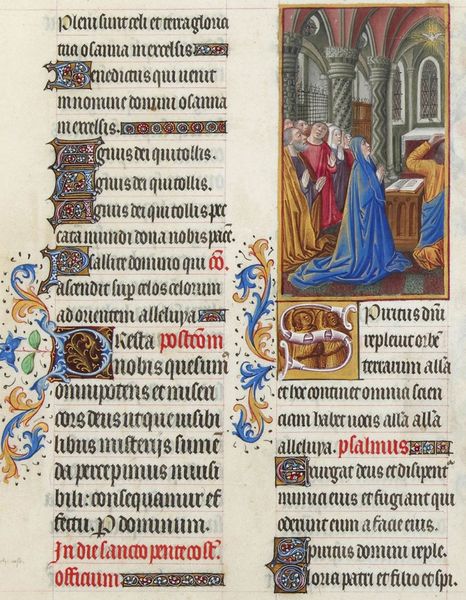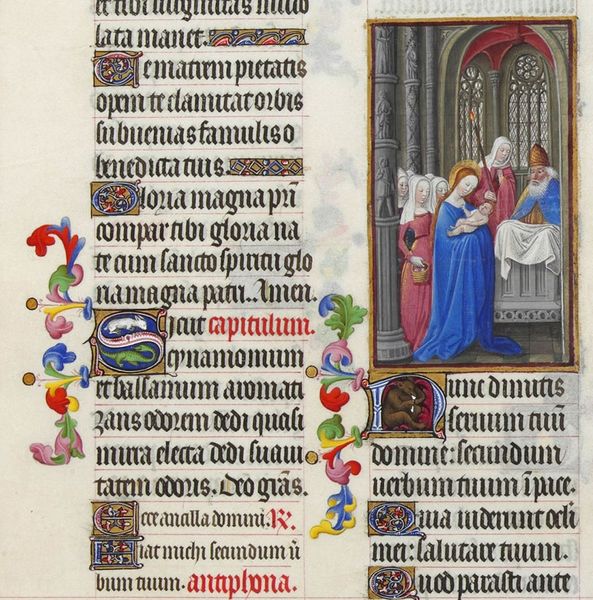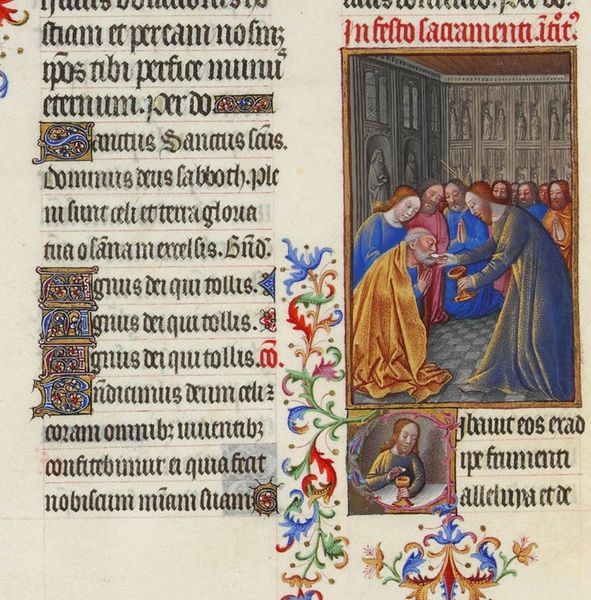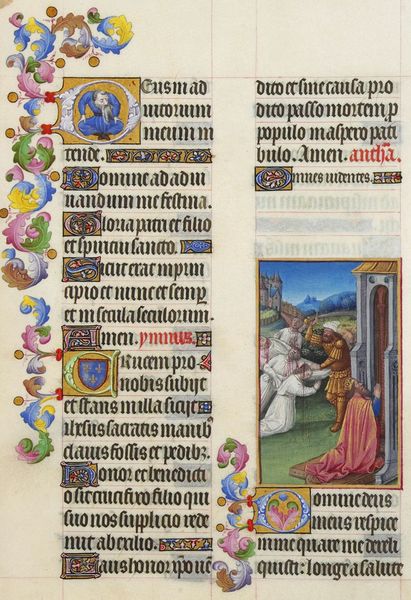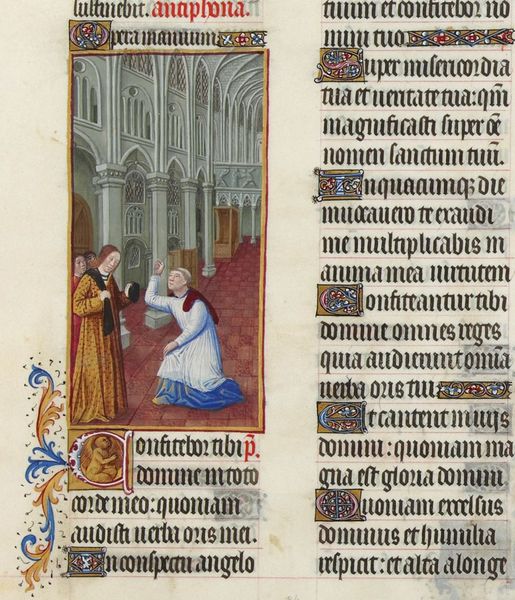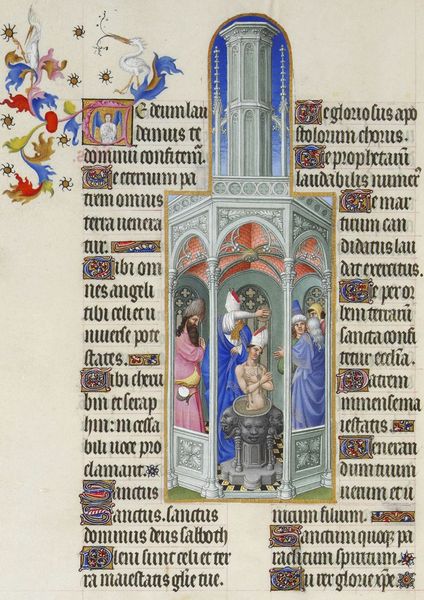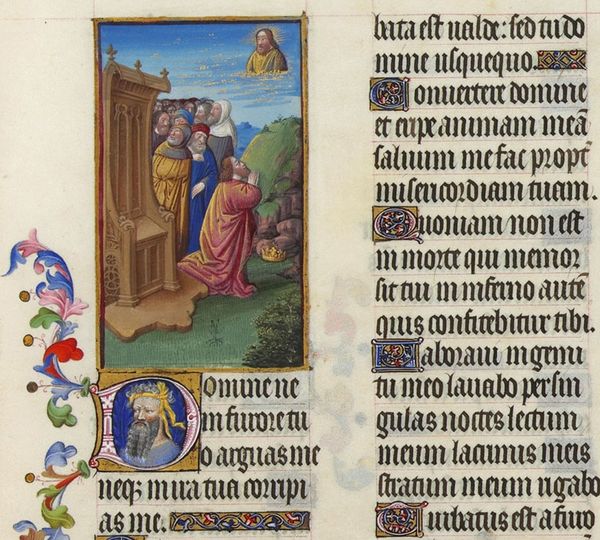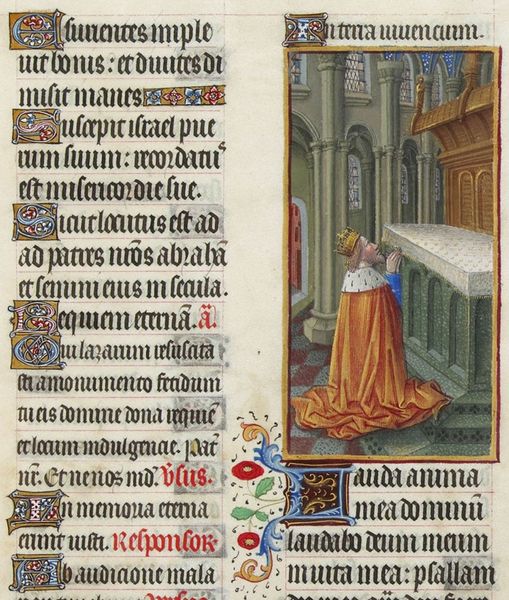
tempera, painting
#
portrait
#
medieval
#
tempera
#
painting
#
figuration
#
madonna
#
international-gothic
#
miniature
Copyright: Public domain
Curator: This is an intriguing example of manuscript illumination depicting the Madonna and Child. It’s attributed to the Limbourg brothers, created in the International Gothic style, though the exact date remains unknown. The painting employs tempera and, true to the medium, is incredibly detailed. Editor: It evokes such a serene, otherworldly feeling. There’s something very intimate about it despite being so stylized. The elongated figures, the delicate details... it almost feels like peering into a dream. What can we glean from the composition, structurally? Curator: The miniature situates the Madonna within an architectural space—suggesting a chapel or sacred alcove. She gazes down with a serene expression, almost as if in thought, while the Child actively reaches upward towards her. It immediately brings to mind broader discourses around medieval depictions of maternal figures in religious and secular culture. The contrast between Mary’s stillness and the child’s reaching is thought-provoking. Editor: Visually, I'm drawn to the crown. It instantly establishes Mary’s divine status, linking her to concepts of queenship, nobility, and grace. The details in the surrounding decoration offer further clues as to the meaning and place of this imagery. Curator: The colours themselves carry symbolic weight. Her blue cloak has historically been linked to the Virgin Mary and speaks to faith, piety, truth and is meant to evoke the heavens and a feeling of royalty. In considering identity within this context, the absence of conventional Gothic colorations presents a unique study. Editor: Precisely. And in considering its enduring significance, the imagery speaks to an undeniable element within the human experience: the image of the Mother. Across centuries and civilizations, similar visual motifs recur, each expressing fundamental ideals around love, security, and connection. Curator: These manuscript pages really invite critical interrogation into how religious iconography influences broader notions about femininity and power dynamics in Medieval times. Editor: Absolutely. It's a potent convergence of devotional artistry, cultural beliefs, and deeply personal sentiments. It shows us so much about cultural ideals in art.
Comments
No comments
Be the first to comment and join the conversation on the ultimate creative platform.
